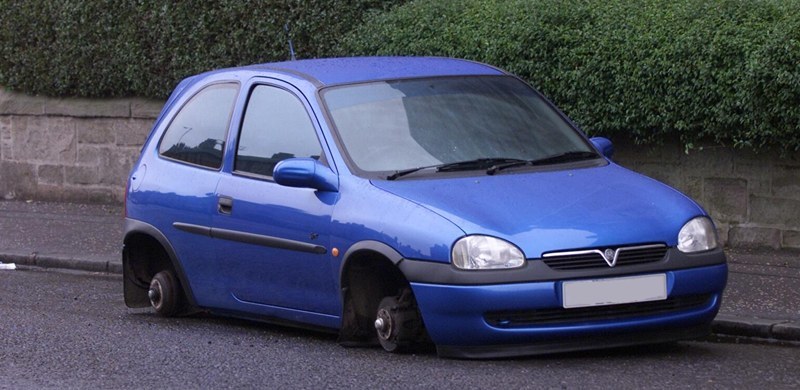The humble Vauxhall Corsa is the top target for car thieves in Dundee, police revealed this week.
It was followed in the list of stolen cars by other unremarkable hatchbacks the Ford Fiesta, Vauxhall Astra, Renault Clio and Peugeot 206 all of which, like the Corsa, were older generation models.
Tayside Police said the cars were the most popular among car thieves because their dated security systems were easier to crack than those on more modern vehicles.
Detective Chief Inspector Sean McKillop, head of CID, said the fact the cars were older models also meant thieves had had more time to figure out their security weaknesses.
He added, “That definitely makes it easier for criminals to gain access. These cars are stolen mainly as a means of transport by joyriders. Very few are stolen for financial gain.
“Security measures on modern cars are far superior and that means they are much harder to steal.”
A freedom of information inquiry by The Courier also revealed that the youngest car thief in Dundee in the year to the end of April was just 12 at the time of the offence, committed in the Hilltown in May 2009.
The largest number of thefts attributable to one thief was six and the most expensive vehicle stolen was a £60,000 Volvo commercial vehicle.
Figures covering the years from May 1, 2006, to the end of April this year, and including the theft of goods from vehicles, show that the number of vehicle crimes in the city actually fell over that period, from 1132 to 788.
Police detection rates over the period also improved but remain below one-in-three crimes. In 2006-7, the detection rate was 23.32%, rising slightly to 23.7% the following year.
There was another improvement to 28.79% in 2008-9, peaking at 29.18% in the year to the end of April this year.
Cars built in the last few years are considered to be almost impossible to steal without the actual ignition key.
Cars built after 1999 are also considered to be low risk but the odds for thieves improve beyond that year.
Those made after 1996 are still thought to be at low risk, but cars older than that are far easier to steal.
Vehicle crime has been steadily falling across the UK since its peak in the early 1990s but remains a problem for police, with some thieves now breaking into homes to steal the keys for expensive new models parked in the drive.
